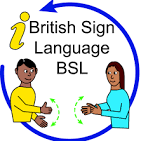Accessible Information Standard (AIS)
Accessible Information Standard (AIS_
The Accessible Information Standard (AIS) ensures people with disabilities or sensory loss receive information and communication support in a way they can understand. It's a legal requirement for all NHS and adult social care providers to identify, record, flag, share, and meet the information and communication needs of patients, service users, carers, and parents.
Key aspects of the AIS for patients:
-
Identifying Needs:Providers must ask patients if they have any information or communication needs related to a disability or sensory loss.
-
Recording Needs:If a patient has specific needs, they must be clearly recorded in a way that is easily accessible to staff.
-
Flagging Needs:The patient's record should be flagged to alert staff to these needs, ensuring they are addressed during interactions.
-
Sharing Needs:With consent, patient information and communication needs should be shared with other relevant healthcare providers.
-
Meeting Needs:Providers must ensure that patients receive information in an accessible format and receive communication support when needed.
Examples of accessible information formats include:
- Large print
- Braille
- Easy read
- British Sign Language (BSL)
- Via an advocate
- Email

Preferred Method of Communication
We would like to record your preferred method of communication so that you can receive your health information in a format that you can understand.
For most patients the preferred method of communication is the home number or mobile number but, for example, if you suffer from hard of hearing or blindness that may not be suitable for you.
If you or someone you are caring for wishes us to contact you in another way, please do let us know by either ringing the surgery or informing one of our receptionists. We will then record your needs by highlighting it on your medical records.
Page last reviewed: 27 June 2025
Page created: 27 June 2025
Page created: 27 June 2025